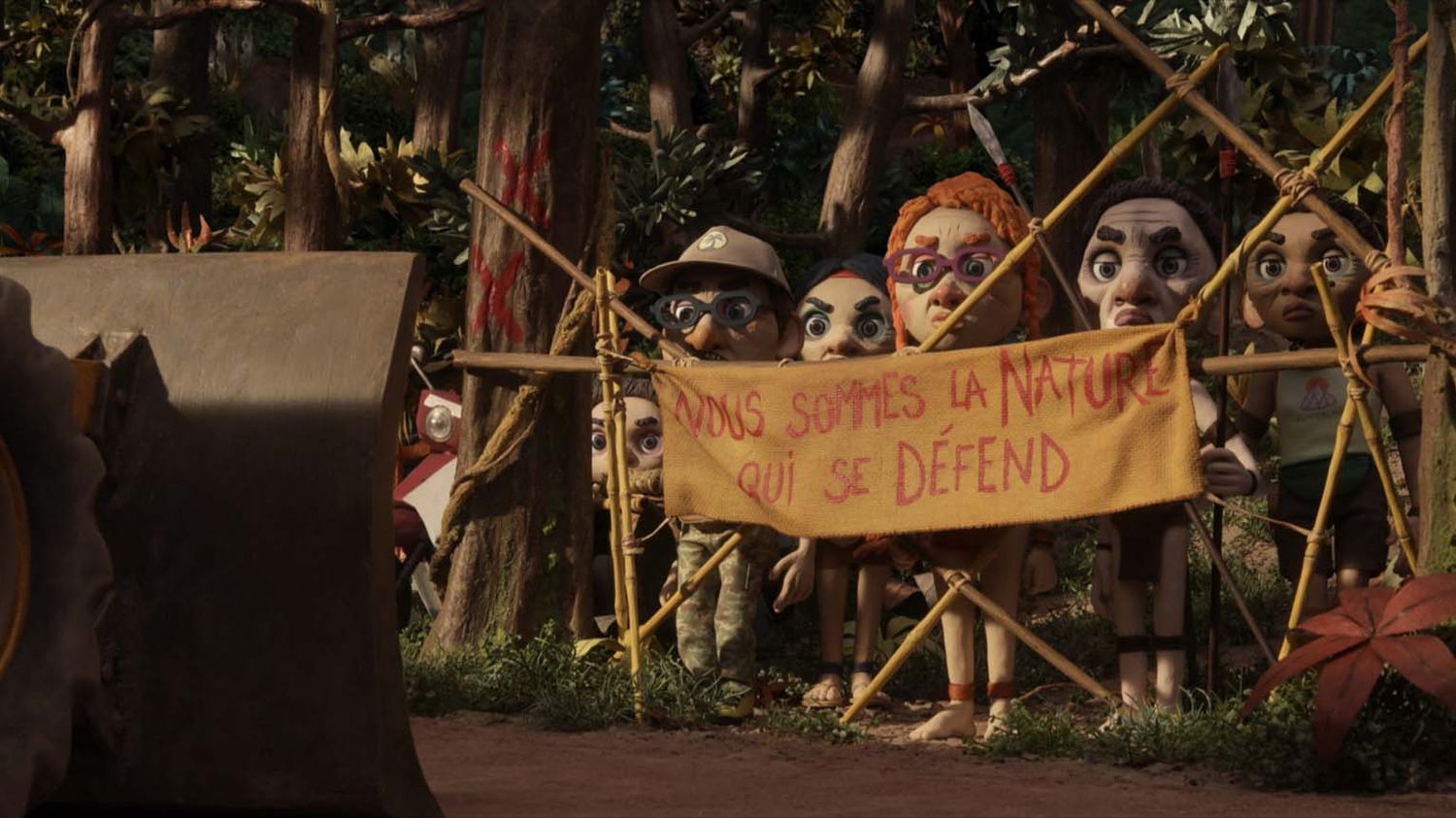The new animated feature film by the Swiss filmmaker revives the little puppets with big wide eyes that made “My Life as a Zucchini” such a success.
Published
Reading time: 3 min

Director of the moving My life as a zucchini (2016), acclaimed in theaters – more than a million admissions – and by critics, Claude Barras returns eight years later with an ecological and poetic fable about the fight of an indigenous people against deforestation. Sumptuous animated film, designed as an invitation to act, Savages hits theaters Wednesday, October 16.
The film takes us to the island of Borneo, among the Penan people. At the edge of the immense tropical forest where she lives, 11-year-old Kéria one day discovers a baby orangutan abandoned in the palm tree plantation where her father works. While she takes care of the little monkey, her young cousin Selaï comes to take refuge with them to escape the conflict between her family and logging companies. These two encounters will lead Kéria to the heart of the forest where her ancestors live, a territory threatened with destruction.
The new feature film by Claude Barras reconnects with the little puppets with big wide eyes that made the success of My life as a zucchini. Signature of the Swiss director, these unique characters as well as the sets required an entire year of work to create. The filming carried out in Martigny, Switzerland, mobilized around thirty people over seven months.
Savageslike Claude Barras’ previous films, is made in stop motion, a technique that requires extreme patience. Each scene is photographed frame by frame and on each of the ten sets installed in parallel, the rate is on average 4 seconds produced per day.
If the plot takes place on the island of Borneo which is home to one of the largest tropical forests in the world, it finds its origin in the childhood memories of Claude Barras.
“I come from a family of semi-nomadic farmers, he says. My grandparents in the Alps practiced riddling [la transhumance], we changed villages according to the seasons. People lived in a very simple way, in contact with nature.” A daily life close to that of the Penan people.
It is this indigenous people threatened with extinction that the director also wants to defend with Savages. “I am aware that I have only made one film. But I believe in the power of stories. If my film can meet wishes, bring together ideas, then I will be happy with myself.”
Written after a long period of investigative work, Savages tells an alarming reality. There is still 10% of unexploited primary forests left on the island of Borneo and people whose rights are being taken away by corrupt politicians and multinationals. If the film is aimed at children, it is to better invite each spectator to act by refusing to consume palm oil or wood from these ancestral forests or by participating in the impact campaign imagined for the release of the film next October.

Gender : Animation
Director: Claude Barras
With the voices of: Benoit Poelvoorde, Laëtitia Dosch, Gaël Faye, Komeok Joe, Nelly Tungang and Sailyvia Paysan
Country : Belgium/France/Switzerland
Duration : 1h27
Exit : October 16, 2024
